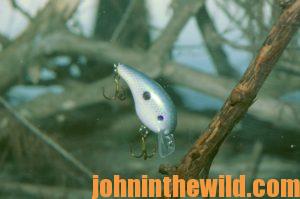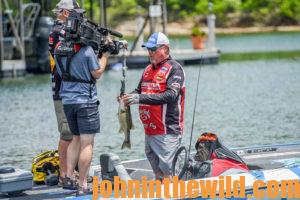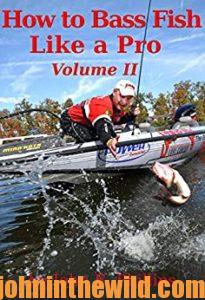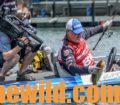Editor’s Note: Mark Davis of Mt. Ida, Arkansas (https://www.facebook.com/markdavisprobassfishing), has won the Angler-of-the-Year title three times and the Bassmaster Classic.
* Crankbaits:
 The month of November is a great time to fish in the creeks with crankbaits. This time of the year, I like to fish creek-channel banks, rock banks and/or deep, gravel banks. The crankbait works best when you fish it with an interrupted retrieve. Cast parallel to the bank, and try to keep your crankbait in the 5- to 8-foot zone. Then pause it several times during the retrieve. Attempt to bump it into rocks, stumps and brush. Stop and start, crash and pause, and pull and hesitate the bait. I believe a baitfish that stops or hesitates triggers a bass to strike and offers the bass an opportunity at a quick, easy meal.
The month of November is a great time to fish in the creeks with crankbaits. This time of the year, I like to fish creek-channel banks, rock banks and/or deep, gravel banks. The crankbait works best when you fish it with an interrupted retrieve. Cast parallel to the bank, and try to keep your crankbait in the 5- to 8-foot zone. Then pause it several times during the retrieve. Attempt to bump it into rocks, stumps and brush. Stop and start, crash and pause, and pull and hesitate the bait. I believe a baitfish that stops or hesitates triggers a bass to strike and offers the bass an opportunity at a quick, easy meal.
In the fall, I prefer fishing with Strike King’s Series 3 Crankbaits (https://www.strikeking.com/products/pro-model-series-3-crankbait). During this time of the year, bass feed on crawfish, so smaller baits catch more bass than bigger baits. Bigger crankbaits may catch a few bigger fish, but I’ve found in November that big fish bite small crankbaits just as readily as little bass do. In clear water, I fish the crawfish-colored crankbait. If the water is stained, I fish a chartreuse-colored crankbait with a brown back.
* Crankbait Equipment:
I prefer to cast the crankbait on either 8- or 10-pound-test line with spinning tackle. You can get the crankbait deeper on lighter line, like 8-pound test. And, with spinning tackle, you can cast the crankbait further and keep it in the strike zone of the bass longer than you can on bait-casting tackle. Almost everyone fishes crankbaits on bait-casting tackle, but I have found that I get more strikes and catch more fish on spinning tackle. However, if you want to fish big crankbaits, and depth is not a consideration, then obviously you don’t need to fish spinning tackle. But if bites are hard to come by, I downsize my crankbait, use lighter line, make longer casts and fish with spinning tackle.
I like to use a medium-action spinning rod that has some bend in the middle of it. You don’t want a rod that’s so stiff that it tears the hooks out of a fish’s mouth when it takes the bait. The length of your rod needs to be about 6- to 6-1/2 feet long. Use a fairly-large-spool spinning reel with a large-line capacity that enables you to make long casts and has a fairly-slow retrieve ratio.
* Fall Crankbait Tactics for Bass:
One mistake many crankbait fishermen make is that they try to set their hooks when bass take their crankbaits. That’s when they pull the baits away from the fish or tear the hooks out of the  fishes’ mouths. When a bass attacks a crankbait, the fish usually sets the hook itself. All you really need to do is tighten-up on the reel and use a steady retrieve to bring it in to your boat. Just speed-up your retrieve, lean back on the rod, and continue to wind. Remember that the harder you pull on the bass, the more likely it is to jump, shake its head and throw the lure. So, just keep minimal pressure on the fish, and don’t try to pull it really hard. You want to bring the bass to the boat gently. Once you get the fish close to the boat, keep your rod tip down in the water to prevent it from jumping. When I fish crankbaits in November, I don’t like for the water to be really cold. I like the water temperature to be between 48 to 58 degrees, with 55 degrees being about perfect.
fishes’ mouths. When a bass attacks a crankbait, the fish usually sets the hook itself. All you really need to do is tighten-up on the reel and use a steady retrieve to bring it in to your boat. Just speed-up your retrieve, lean back on the rod, and continue to wind. Remember that the harder you pull on the bass, the more likely it is to jump, shake its head and throw the lure. So, just keep minimal pressure on the fish, and don’t try to pull it really hard. You want to bring the bass to the boat gently. Once you get the fish close to the boat, keep your rod tip down in the water to prevent it from jumping. When I fish crankbaits in November, I don’t like for the water to be really cold. I like the water temperature to be between 48 to 58 degrees, with 55 degrees being about perfect.
* The Best Places and the Equipment to Use to Fish the Jig in November:
Like the crankbait, the jig is hard to beat this month for bassing success. The bass primarily will be feeding on crawfish, and the jig is an excellent crawfish imitation. I fish the jig on 15-25 pound-test line. I use a 6-1/2- to 7-foot, medium-heavy casting rod and a fast-retrieve gear-ratio rod. You can catch bass on jigs using a wide variety of tactics during the fall.
As I’ve mentioned, I fish creek banks during November. After I fish down a bank with a crankbait, I come right back down that same bank with a jig. I’ll usually catch some additional bass fishing that same bank when I fish it with the jig. Another place where the jig can really pay-off is along boat docks – especially deep boat docks. Boathouses are prime fishing locations this month, because many boat owners pull their boats out of the water at this time of the year, which leaves the boat slip open to make an easy cast into it with the jig. You can fish to the center of the boat dock where that boat has sat all summer, so you have new water to fish that you haven’t been able to fish all year. Therefore, you’ll possibly present the jig to a place and in a way that the bass haven’t seen before.
When you fish a lake with boat docks and boat houses, and those homeowners have pulled their boats out of the docks to be winterized, you need to fish those boat slips heavily. Another good place to fish jigs this month is on points. I like the steeper points and a point that has a bluff on the bank. I like to fish the ends of the  points where the creek channels swing away from the bluff. I’ll fish the jig from 5-feet deep to possibly as deep as 25 feet, depending on the water clarity, and where I find the bass holding. Once you locate the bass on these points, you usually can find bass at that same depth on other points throughout the lake.
points where the creek channels swing away from the bluff. I’ll fish the jig from 5-feet deep to possibly as deep as 25 feet, depending on the water clarity, and where I find the bass holding. Once you locate the bass on these points, you usually can find bass at that same depth on other points throughout the lake.
Several colors of jigs will produce bass this month, particularly black and blue. I also like the crawfish colors, like the Bleeding Bait jigs that have some pumpkin, green and red in them. I try to match my trailer to my jig. For instance, I’ll probably prefer a green-pumpkin chunk or possibly a watermelon-colored chunk. If I fish a black-and-blue jig, then I’ll fish a black or a black-and-blue trailer. Strike King has a red weed guard on some jigs. I believe the red weed guard enhances the jig and makes it more appealing to the bass. Red contrasts with the other colors; therefore the jig stands out and gives the appearance of an injured or a bleeding crawfish or baitfish. The big thing about the red weed guard is that it gives a different look to the jig – a look the bass haven’t seen before. Anytime you can change the look of a bait and present a lure that’s different from what the bass usually see, you have a better chance at triggering a strike.
To learn more about catching bass, check out John E. Phillips’ latest book just published in October, 2020, “How to Bass Fish Like a Pro, Volume II,” at https://amzn.to/3kb0QI6, available in Kindle and soon to be available in print and Audible. You may have to copy and paste this click into your browser.
Tomorrow: Mark Davis Says to Fish Spinner Baits, Tubes and Jerkbaits in November for Bass










